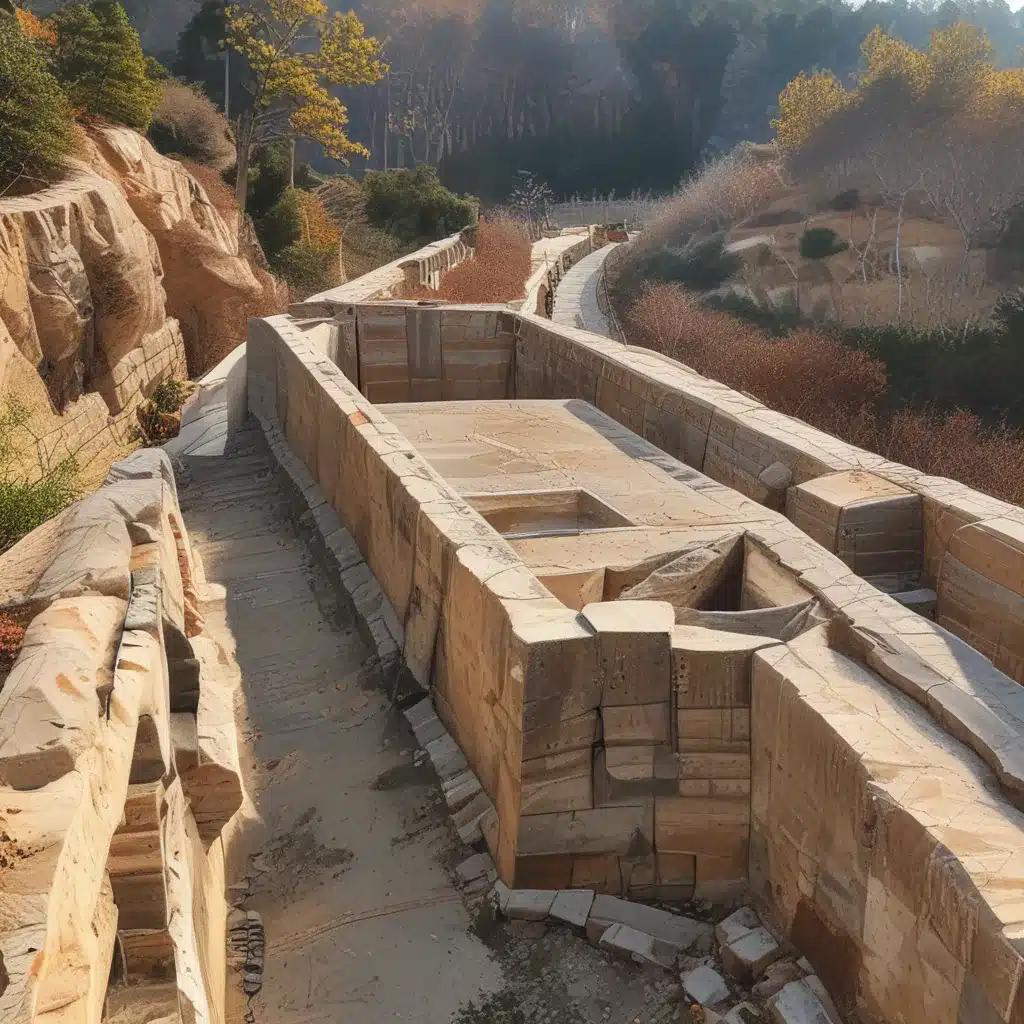
Discovering the Regal Relics of Seoul’s Past
As I strolled through the lush greenery of Seoul’s Seolleung and Jeongneung Royal Tombs, I couldn’t help but feel a sense of wonder and reverence. This historic site, nestled amidst the bustling heart of the city, offered a glimpse into Korea’s rich and storied past.
You see, I had heard whispers of these ancient burial grounds, where the remains of Joseon dynasty kings and queens lay in peaceful repose. And as I set out to explore them, I couldn’t help but be swept up in the allure of uncovering their secrets.
Navigating the Royal Realm
My journey began at the park’s entrance, where a grand dragon-adorned gate greeted me. As I passed through, I was struck by the juxtaposition of the modern metropolis and the serene, time-honored landscape. The dirt trails winding through the lush greenery seemed to transport me to a different era, one where the weight of history hung heavy in the air.
Following the map, I made my way to the Jaesil, or “House of Purification.” Here, I imagined the ritual presiders preparing themselves, both physically and mentally, before the solemn ceremonies honoring the royal dead. The simplicity of the structure only added to the sense of reverence and gravity that permeated the site.
Unearthing the Secrets of Seolleung
My next stop was the Seolleung tomb, the resting place of King Seongjong and Queen Jeonghyeon. As I approached the double-mounded structure, I was struck by the intricate detail of the twelve-faced retaining stones that surrounded the king’s burial mound. Each face bore the symbol of an Oriental zodiac animal, a testament to the rich cultural traditions that had been woven into the design.
In contrast, the queen’s mound stood more modestly, yet no less elegantly, adorned with a stone railing in a twelve-angled pattern. I couldn’t help but wonder about the stories these silent sentinels could tell, if only they could speak.
According to TripAdvisor, Seolleung is a “double-mound tomb of the royal couple of King Seongjong the 9th monarch and Queen Jeonghyeon his consort.” It’s a fascinating glimpse into the Joseon dynasty’s royal lineage.
Exploring the Tomb of King Jungjong
As I continued my journey, I stumbled upon the Jeongneung tomb, the final resting place of King Jungjong. Unlike the previous site, this was a single-mound structure, yet no less impressive. The twelve-faced retaining stones, each bearing the symbol of an Oriental zodiac animal, surrounded the burial mound, creating a sense of symmetry and balance.
According to Town Traveller, King Jungjong’s tomb was originally situated in the royal graveyard of Seosamneung, before being separated and moved to this site by his third consort, Queen Munjeong. The blog post suggests that Queen Munjeong had hoped to be buried alongside her husband, but the area’s propensity for flooding dashed her plans.
As I stood before the majestic structure, I couldn’t help but wonder about the stories that lay buried beneath the surface – the triumphs and tribulations, the joys and sorrows that had shaped the lives of these long-departed monarchs.
Uncovering the Park’s Hidden Gems
Beyond the tombs themselves, the Seolleung and Jeongneung Royal Tomb Park offered a wealth of additional treasures to discover. I stumbled upon the Stele Shed, a structure designed to protect the intricate stone monuments from the ravages of wind and rain. Each stele, I imagined, held the key to unlocking even more of the site’s history.
And let’s not forget the Royal Kitchen and Tomb Guards House, reminders of the meticulous care and attention that was once lavished upon these sacred spaces. It was as if the very air whispered the echoes of past ceremonies and rituals, inviting me to become a silent witness to the grandeur of a bygone era.
According to TripAdvisor Canada, the park’s precincts “have become a major green zone in Seoul’s central business district today,” a testament to the enduring importance of preserving these cultural treasures.
Paying Homage to the Past
As I explored the Seolleung and Jeongneung Royal Tombs, I couldn’t help but feel a deep sense of respect and admiration for the kings, queens, and the rich tapestry of Korean history they represented. These ancient burial grounds, nestled amidst the bustling streets of modern-day Seoul, stood as a testament to the enduring power of the past to shape the present.
And as I made my way back to the Hotel Stay Inn Seoul, I couldn’t help but feel a renewed appreciation for the cultural treasures that lay hidden in the heart of this vibrant city. After all, there’s nothing quite like stumbling upon the secrets of the past to truly understand the depth and richness of one’s own heritage.
So, if you find yourself in Seoul, be sure to carve out some time to explore the Seolleung and Jeongneung Royal Tombs. Who knows what hidden gems you might uncover, just waiting to be discovered?

